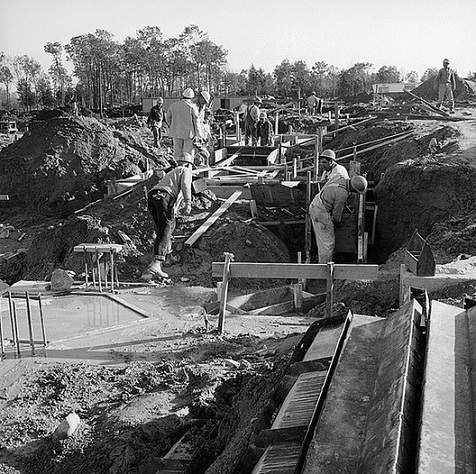
By Max Cohen
“Umass Dartmouth had one distinguishing feature–its utter lack of character,” is how Rolling Stone magazine described our campus in its controversial article on the Boston bombing suspect Dzhokhar Tsarnaev. Unfortunately, this seems not to be a minority opinion, as Travel+Leisure has placed it on its list of America’s ugliest campuses. However, as a student who not only learns, but lives on campus, I can tell you personally that these descriptions couldn’t be further from the truth.
Before I rebut these claims however, you may find it useful and interesting to note the history of the university. Umass Dartmouth’s roots stem from the seeds that were the New Bedford and Bradford Durfee Textile School, in New Bedford and Fall River respectively. It wasn’t until the early 1960’s however, after an act was approved by the Massachusetts State Legislature that these two schools were united, at least in name, as the Southern Massachusetts Technological Institute (SMTI).

The act designated the university’s purpose at the time as, “giving instruction in the theory and practical arts of engineering and science, the liberal arts, and other appropriate curricula which shall be established from time to time to include such scientific, technological, and other studies as may be deemed desirable by the Board of Trustees of said Institute.” It was also around this time that the state reviewed and approved a design plan of the campus by renowned architect Paul Rudolph.
It wasn’t until 1964, four years after the law’s passage, when the ground was finally broken upon which the university would be built. At the time it was being built, the Brutalist architectural style was considered “revolutionary” in its modernity and departure from the norms of other universities in the region. Two years afterwards the New Bedford Institute and Bradford Durfee College of Technology were fully consolidated into the Southern Massachusetts Technological Institute. Also in 1966 the first academic building, the Liberal Arts building (LARTS), was finally opened.
The university was formed in an effort to promote the economic growth of the region, and meet the educational needs of the current populace. It was designed in a way to challenge the norms, and set a new standard by which others could follow. Since its creation the university has turned out thousands of graduates, including state representatives, artists of some of the highest caliber, and many successful businessmen and women.

It is considered by more than a few publications to be one of the best public universities not only in Massachusetts, but in the New England region as a whole, for its incredible programs and teachers. As a student I know the education and experiences I’ve gone through here have helped me grow both as an intellectual and a person.
To say this university has no character annoys me to no end, as it ignores the effort put into it as well as what it means to those who go here. The character of this university rests in the mind of the architect who envisioned something revolutionary and new, something that was controversial and would provoke in-depth thought for decades to come. This university’s character is built on the blood, sweat, and tears of all who worked to see it realized, and those who continue to not only take care of it, but take it beyond its limitations and make it even greater.
The character of this university echoes in the lecture halls and classrooms, a mix of the voices of passionate teachers, who have worked to help their students visualize and achieve greatness. It shines in the smile of every student, and glows on every busy computer screen. If someone cannot see it, then perhaps they should stop, breathe, and look a little closer.
I’ll admit, upon seeing the university for the first time, I thought it was odd, but I was also intrigued for I’d never seen something quite like it. The dull gray wasn’t the most inspiring color, and as I walked the campus I felt like I lived in an M.C. Escher painting, and not in a good way. Only now however, looking back on how the university was then and how it is now can I comprehend why some things are how they are, and how other things have improved.

For example the dull gray of the concrete only creates a sharper contrast against the campus’ lush greenery and colorful interiors. And while the construction style makes it odd to move around, I can safely say it’s never been boring trying to get to class. There’s also the bell tower in the center of campus, which I always felt my eyes drawn to each time I pass it, and even at night when I walked by it I couldn’t help but stare up at the little light at the top like it was a part of some malformed Christmas tree that stood all year.
Nowadays the university has added a little flair to it, coloring the gray obelisk with lights of the school’s colors, blue and gold. You can’t help but look at it, marvel at the colors and feel a surge of school pride.
In the end it was the students this campus was built for. To make sure we would be able to succeed in a competitive world, and to help the region we call home to remain prosperous and innovative. And so it’s up to us, whether to like or hate the appearance of what has been built for us. Before you decide though, take a walk around and absorb the essence of it all, and I think you’ll find you agree.
Umass Dartmouth is beautiful.
 New Bedford Guide Your Guide to New Bedford and South Coast, MA
New Bedford Guide Your Guide to New Bedford and South Coast, MA









Nice work-Great Article Max!
Great article. I attended undergraduate school here and also was a graduate student here in BU’s off-campus MSW program. The concrete makes for a cold and stark environment, but the classrooms are spacious, the wide stepped stairs make for great exercise, and there are a multitude of lounge areas throughout each building.I recall hearing that the architect based his design of the buildings exteriors on Stonehenge and won awards for the design of the then SMU. Therefore, creating the circular juxtaposition of each stone building. Do you know if the Stonehenge notion is true?